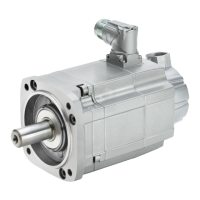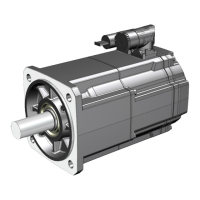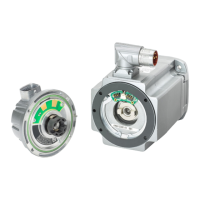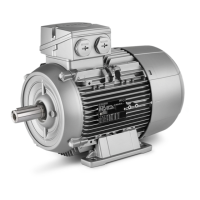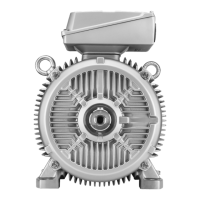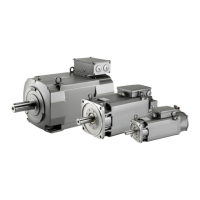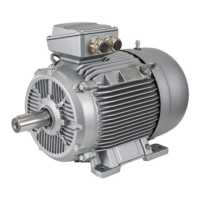4.5 Cooling
4.5.1 Motors with natural cooling
Description
On naturally cooled motors, the heat loss is dissipated through thermal conduction, radiation
and natural convection.
Some of the heat loss is dissipated through the mounting surface of the motor. From large
motors, heat is dissipated via the base frame (steel plate).
Note the specications on thermally non-insulated mounting and on thermally insulated
mounting in Chapter "Thermal mounting variants (Page48)".
Minimum clearance to neighboring components or surfaces
Note
To ensure enough heat is dissipated, a minimum clearance to adjacent components of 100 mm
must be kept free on three side surfaces.
• Mount the motor in such a way that sucient clearance is provided for heat dissipation.
The motor ratings apply in an ambient temperature of 40°C (104°F). If the ambient
temperature exceeds 40°C (104°F), you must adjust the torque and power of the motor
accordingly.
• Adjust the torque or the power of the motor at the converter based on the table in Chapter
"Derating factors (Page32)."
Observe the information provided in the converter operating instructions.
4.5.2 Motors with forced ventilation
Description
This cooling method is achieved using a separate ventilation unit with a fan that is driven
independently of the motor.
NOTICE
Motor damage caused by operation without forced ventilation
The motors with forced ventilation overheat when operated without forced ventilation. This
can cause motor damage.
• Only operate the motor with the fan switched on and all external ventilation attachments
properly tted.
Mounting and options
4.5Cooling
SIMOTICS S-1FT2 synchronous motors for SINAMICS S120
46 Operating Instructions, 12/2023, A5E50610821B AF
